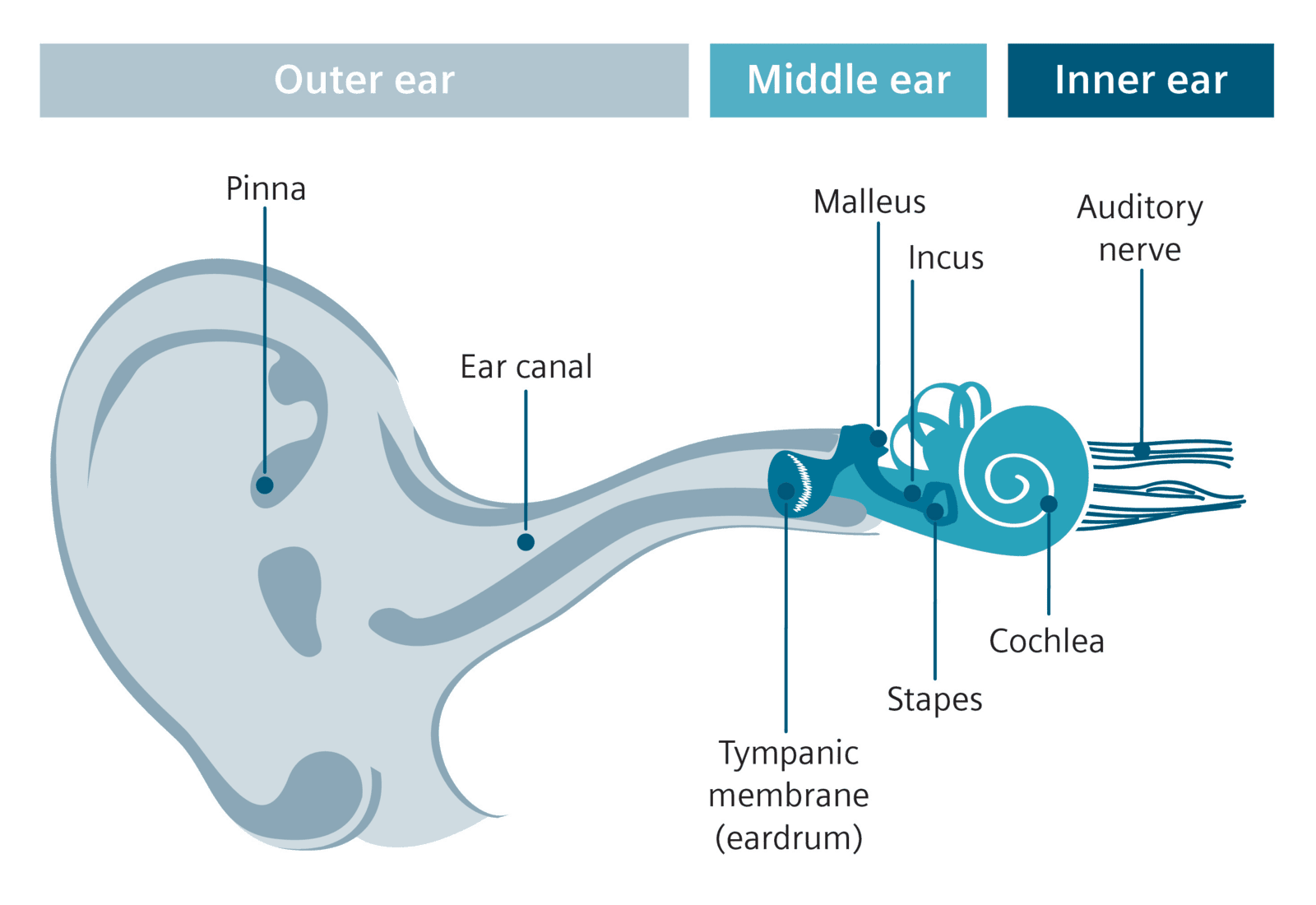Information about hearing and hearing loss

How the ear works. The three main parts of the ear

The inner ear
The inner ear contains 2 main structures — the cochlea, which is involved in hearing, and the vestibular system which is responsible for maintaining balance.
The cochlea is filled with fluid and contains the organ of Corti — a structure that contains thousands of specialised sensory hair cells with projections called cilia. The vibrations transmitted from the middle ear cause tiny waves to form in the inner ear fluid, which make the cilia vibrate. The hair cells then convert these vibrations into nerve impulses, or signals, which are sent via the auditory nerve to the brain, where they are interpreted as sound.
What is hearing loss?
Hearing loss is when the outer, middle or inner ear does not transfer the message to the brain fast enough for the brain to understand speech.
We don’t hear with our ears, we hear with our brain. The ear is the facilitator that turns the sounds that we hear into an electrical impulse that the brain can understand. When we are hearing impaired, either the outer, middle or inner ear is halting the process of sending the message to the brain, therefore delaying the processing of information.
When we are listening to sound this delay is known as hearing impairment; whereby the person that you are speaking with speaks faster that you can understand their speech. Our understanding of speech comes as soon as we are born and the longer we go without hearing the spoken word at the right level, the harder it is to remember what speech is.
Another indicator of hearing loss is when we think that “people are mumbling at me”. Once again this message is not reaching the brain fast enough to keep up with the speech and it all turns into mumble. People who walk away while projecting their voice away from you rather than at you also causes a major problem.
Contextual cues are also needed in speech understanding and if a person’s face is not visible, speech understanding is harder. This is why we prescribe hearing aids.
We need the message to go to the brain fast enough to protect a person’s ability to understand speech.
If we do not protect this understanding of speech, you will lose the ability to understand speech completely. We cannot retrain the brain to understand speech when it can’t hear. Hearing aids protect this ability to understand speech.


